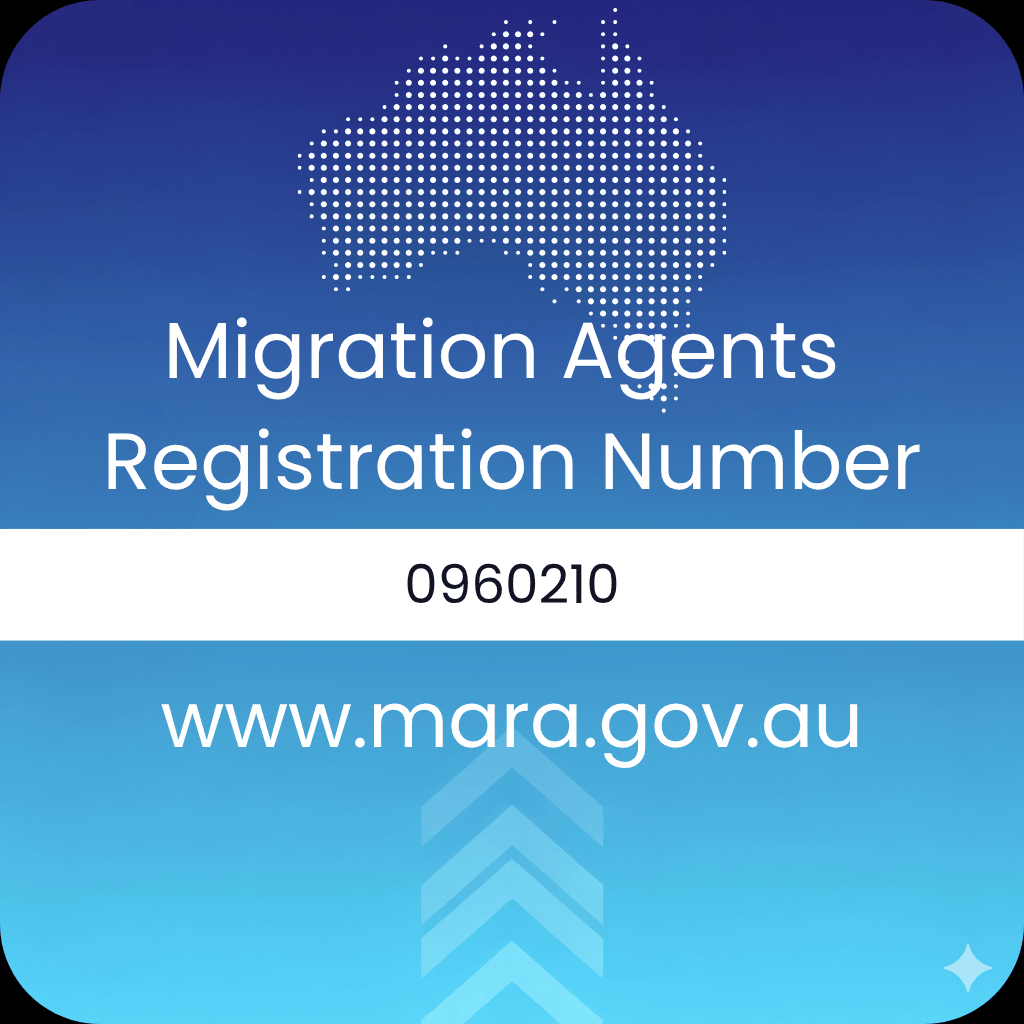As a Registered Migration Agent with over 15 years of dedicated experience, I understand the profound impact that changes in Australian immigration policy can have on individuals and families worldwide. The landscape of Australian visas is dynamic, constantly evolving to meet the nation’s economic, social, and strategic needs. Staying informed is not merely advisable; it is absolutely crucial for the success of your immigration journey.
In the past week, and indeed throughout September 2025, we have seen a series of significant announcements and policy adjustments from the Department of Home Affairs that demand your attention. These updates, spanning various visa subclasses from skilled migration and student visas to partner and permanent residency pathways, underscore the government’s commitment to refining its immigration system.
This blog post aims to cut through the complexity, providing you with a clear, concise, and authoritative overview of the most recent changes. Our goal at Oz World Migration Consultants is to empower you with accurate, responsible, and up-to-date information, enabling you to navigate these developments with confidence and precision.
Introduction: Navigating the Evolving Landscape of Australian Immigration
The dream of living, working, or studying in Australia continues to inspire millions globally. However, this aspiration is often met with the intricate and ever-shifting policies governing Australian visas. For many, the constant evolution of immigration laws can be a source of anxiety and confusion, raising questions about eligibility, application processes, and future prospects. If you find yourself grappling with uncertainty amidst recent headlines, you are not alone.
At Oz World Migration Consultants, we recognize that accurate and timely information is the cornerstone of a successful visa application. As Registered Migration Agents, our commitment is to provide clarity in a complex environment, guiding you with integrity and meticulous attention to detail. This comprehensive blog post will address the most recent and impactful changes to Australian visa policies announced in the last week and throughout September 2025. We aim to demystify these updates, offering actionable insights and highlighting what they mean for prospective migrants, current applicants, and Australian employers.
Australia’s Migration Framework: A Vision for the Future
Australia’s immigration system is undergoing a strategic recalibration, driven by the need to address persistent skill shortages, ensure sustainable population growth, and enhance the integrity of its visa programs. The recent announcements reflect a multi-pronged approach to these objectives, establishing a more predictable yet stringent framework for future migration.
Multi-Year Migration Planning and Program Levels Confirmed
A pivotal development announced on September 2, 2025, is the Australian Government’s confirmation of the 2025-26 Permanent Migration Program at 185,000 places, maintaining the levels from the previous year. This stability in overall numbers signals a shift towards a multi-year planning framework, aiming to provide greater predictability for employers, migrants, and states/territories in aligning migration targets with broader housing, infrastructure, and population strategies.
The program continues its strong emphasis on:
Skilled Stream: Allocated 132,200 places (approximately 71% of the program), designed to boost the economy’s productive capacity and fill critical labour shortages, particularly in regional Australia.
Family Stream: Allocated 52,500 places (approximately 28% of the program), predominantly comprising Partner visas, facilitating family reunification.
Special Eligibility Stream: A smaller component with 300 places for individuals in special circumstances.
This strategic allocation underscores Australia’s ongoing commitment to attracting skilled professionals while also supporting the reunification of families.
Key Visa Changes and Updates in Detail
The past few weeks have been particularly active, with several significant policy and operational changes introduced or clarified. Understanding these nuances is vital for anyone engaging with the Australian immigration system.
- The New Talent and Innovation Visa (Subclass 858)
One of the most transformative changes is the introduction of the new Talent and Innovation visa (Subclass 858). Announced with 4,300 places for the 2025-26 program year, this visa consolidates the previous Global Talent, Distinguished Talent, and National Innovation programs into a single, streamlined pathway.
What it means for you: This visa is designed to attract high-performing professionals, researchers, entrepreneurs, and investors who can make exceptional contributions to Australia’s economy and innovation ecosystem, particularly in critical sectors like AI, renewable energy, and advanced engineering. The goal is to reduce complexity for applicants and enhance Australia’s global competitiveness. If you possess outstanding achievements in innovation, technology, or other priority areas, this could be a direct path to permanent residency. Existing Global Talent and Distinguished Talent visa applicants will be counted within this category and assessed against the eligibility criteria at the time of their application.
- Comprehensive English Language Test Reforms
English language proficiency is a cornerstone of many Australian visa applications, and this area has seen notable adjustments.
a. Expanded Acceptance of English Language Tests
As of August 7, 2025, the Department of Home Affairs has expanded the number of accepted English language tests from five to nine. This significant change offers applicants greater flexibility and more options to demonstrate their English proficiency. The new framework aims to ensure consistent scoring across test providers and accommodate a wider range of international testing standards. Applicants who took their tests before August 7, 2025, under previously accepted providers, may still have their results counted, but it’s crucial to check specific visa eligibility criteria.
b. Adjusted Requirements for the Skilled in Demand (Subclass 482) Visa
A particularly welcome change for many skilled workers is the lowering of English language requirements for the Skills in Demand (Subclass 482) visa, effective September 13, 2025. This visa now requires only “Vocational English” proficiency, typically meaning a minimum IELTS score of 5 in each band or its equivalent in other approved tests like PTE Academic. This adjustment is anticipated to widen access for workers in sectors experiencing acute shortages, making Australia more accessible for those with vocational skills.
c. Increased Benchmarks for Student and Temporary Graduate Visas
Conversely, English language benchmarks have been increased for Student (Subclass 500) and Temporary Graduate (Subclass 485) visas. For Student visa applicants, the minimum IELTS score has risen from 5.5 to 6.0, with specific allowances for those undertaking university foundation or pathway programs (5.5) or packaged ELICOS courses (5.0). For Temporary Graduate visa (Subclass 485) applicants, the minimum IELTS requirement is now 6.5, with at least 5.5 in each component. Furthermore, English test results for these visas must be within one year of the application, a reduction from the previous three-year validity.
- Significant Reforms to Student Visa (Subclass 500) Applications
The Australian Government is keen to ensure the integrity of its international education sector. Several new measures, largely effective since July 1, 2025, and reiterated throughout September, aim to attract genuine students and prevent “visa hopping.”
a. “Visa Hopping” Restrictions
A key policy reiterated for 2025 is the general restriction preventing holders of Visitor (Subclass 600) or Temporary Graduate (Subclass 485) visas from applying for a student visa from within Australia. This measure, first introduced in July 2024, is designed to curb the practice of continuously extending stays in Australia through subsequent temporary visas without a clear pathway to permanent residency. Applicants wishing to transition to a student visa from these categories will generally need to apply offshore.
b. Mandatory Confirmation of Enrolment (CoE)
From January 1, 2025, a valid Confirmation of Enrolment (CoE) is now mandatory for all student visa applications, replacing the previous acceptance of a Letter of Offer. This applies to both onshore and offshore applicants and signifies a stricter approach to ensuring students are genuinely enrolled before their visa is granted. Failure to provide a CoE at the time of application will render the application invalid.
c. Increased Financial and Application Fee Requirements
Prospective international students must now demonstrate greater financial capacity. The minimum living expense requirement has increased to AUD 29,710 to ensure students can support themselves adequately during their studies. Additionally, the Student visa (Subclass 500) application fee increased to AUD 2,000 as of July 1, 2025. The Department of Home Affairs is also demanding stronger evidence of financial capacity, with vague bank letters or unverified sources no longer accepted.
d. Updated Evidence Levels for Student Visas
The Department of Home Affairs has recently updated evidence levels for student visa applications via the PRISMS system. While not officially published, these internal levels assess the documentation required based on a combination of the applicant’s country of origin and the education provider’s risk profile. Students from higher-risk countries, even when attending reputable institutions, may face stricter documentation requirements, including more detailed proof of English proficiency or financial capacity. This ensures the integrity of Australia’s international education system.
- Key Updates to Partner Visas (Subclass 820/801 & 309/100)
Partner visas, crucial for family reunification, have also seen recent adjustments, largely focused on integrity and processing efficiency.
a. Visa Application Fee Adjustments
As of July 1, 2025, visa application charges for Partner visas have increased, with the fee for the primary applicant now standing at AUD 9,365. Additional costs apply for secondary applicants and credit card surcharges. This necessitates careful financial planning for couples applying.
b. Heightened Focus on Relationship Genuineness and Two-Stage Process
The Department continues to place a strong emphasis on assessing the genuineness and ongoing nature of relationships. Applicants are advised to provide even more detailed evidence, encompassing joint finances, shared household responsibilities, social recognition of the relationship, and a demonstrated commitment to a life together. There is also a renewed emphasis on digital lodgments and submitting fully documented applications to avoid processing delays.
Furthermore, the Partner visa process now officially involves a two-stage application, requiring sponsorship approval before the visa application can be lodged. This change aims to enhance the integrity of the system and prevent fraud.
c. Upcoming English Language Requirements for Partner Visa Applicants and Sponsors
A significant future change flagged for 2025 is the potential introduction of an English language requirement for both Partner visa applicants and their sponsors. While the exact implementation details are pending, the proposed requirement is for applicants and sponsors to demonstrate functional English or commit to government-funded English programs. This initiative aims to boost integration and participation in Australian society through stronger communication and employment opportunities. It’s crucial for prospective applicants and sponsors to be aware of this and potentially consider language skill development.
- Skilled Migration Visa Invitations and Occupation Lists
Skilled migration remains a cornerstone of Australia’s immigration program, and recent activity indicates a renewed focus after a period of adjustments.
a. Subclass 189 Invitation Round
After a nine-month pause, a new Skilled Independent visa (Subclass 189) invitation round was held on August 21, 2025. This round brought positive news for many applicants, particularly those in critical sectors such as construction, health, and teaching, with invitations issued to candidates with scores as low as 65 points. This signals renewed activity in this important permanent residency stream.
b. Core Skills Occupation List (CSOL) Consultations
Consultations for the 2025 Core Skills Occupation List (CSOL) by Jobs and Skills Australia commenced on August 25, 2025, with stakeholder submissions closing on September 26, 2025. This review is crucial as it aims to ensure that the skilled occupations available for migration truly reflect Australia’s current workforce needs and fill critical skill shortages. The outcomes of these consultations will directly impact which occupations are prioritized for skilled visas.
- Temporary Skilled Migration Income Threshold (TSMIT)
The Temporary Skilled Migration Income Threshold (TSMIT) continues to be a relevant factor for employer-sponsored visas. From July 1, 2025, the TSMIT increased to AUD 76,515 for applications lodged on or after this date. This annual indexation ensures that temporary skilled migrants are paid at market rates and helps protect Australian workers’ wages.
- State and Territory Nomination Programs
Individual states and territories play a crucial role in skilled migration, with many releasing their interim allocations and program adjustments for the 2025-26 financial year in early September.
Queensland: Migration Queensland announced its 2025-26 Skilled Migration Program opened for Registration of Interest (ROI) on September 19, 2025. This includes revised onshore and offshore occupation lists and new pathways for the Building and Construction workforce.
New South Wales (NSW): The NSW Subclass 491 (Skilled Work Regional (Provisional) visa) pathway has seen a positive update, reducing the work requirement from 12 months to just 6 months with one regional employer in a nominated occupation. This can significantly accelerate the permanent residency pathway for those contributing to regional areas.
South Australia and Western Australia: These jurisdictions also opened their programs with initial allocations, reflecting careful planning aligned with the federal multi-year approach.
- New Ministerial Instructions for Intervention Powers
On September 4 and 17, 2025, the Minister for Immigration and Citizenship, the Hon Tony Burke MP, issued new Ministerial Instructions and Personal Procedural Decisions (PPDs) regarding the use of Ministerial Intervention powers under sections 351, 501J, 46A, and 48B of the Migration Act 1958. These instructions took immediate effect, replacing previous guidelines from 2016 and 2017. This means that any new requests for Ministerial Intervention will be assessed under these updated directives, and individuals with active requests lodged before September 4, 2025, may be notified of outcomes under new PPDs.
- Enhancements to the Australian Immigration Application Process
In a move to streamline and simplify visa applications, the Department of Home Affairs announced on September 30, 2025, the Building Visa Processing Capability – Australian Immi App. This new application aims to make the process of applying for an Australian visa easier, reflecting a broader digital-first approach to improve efficiency and reduce waiting times, particularly for PR visas.
- Other Notable Updates:
Skills Assessment Fees: Migration skills assessment fees for professions in fields like engineering and healthcare are set to rise by approximately 3-4% from September 2025. Applicants should factor these increased costs into their overall budget.
Digital-First Processing: The Department is increasingly prioritizing digital lodgments and fully documented applications across the board to reduce processing delays and enhance efficiency. This includes simplified documentation requirements for PR visas.
Implications for Prospective Migrants and Current Applicants
These recent changes carry significant implications for various groups:
Skilled Migrants: The stability in the overall program, combined with the new Talent and Innovation visa and clearer state nomination criteria, offers defined pathways. However, the ongoing review of the Core Skills Occupation List means applicants must ensure their occupation remains in demand. Lower English requirements for the Subclass 482 visa are positive, but rising TSMIT and skills assessment fees require careful budgeting.
International Students: The tightening of student visa rules, particularly the “visa hopping” restrictions, mandatory CoE, increased fees, and stricter financial evidence, necessitates meticulous preparation. Students must demonstrate a genuine intention to study and robust financial capacity from the outset. The updated evidence levels based on country and provider risk also highlight the importance of choosing reputable institutions and being prepared for thorough scrutiny.
Partner Visa Applicants: The increased focus on relationship genuineness and the two-stage process mean applicants must compile comprehensive documentation. The impending English language requirement for both partners underscores the importance of proactive language preparation.
All Applicants: The emphasis on digital lodgments and complete applications highlights the need for precision and diligence. New Ministerial Instructions for intervention cases mean the criteria for these exceptional requests have been updated.
Actionable Advice for Navigating These Changes
As your Registered Migration Agent, I strongly advise the following:
- Stay Informed and Verify: Always cross-reference information with official government sources, primarily the Department of Home Affairs website [Internal Link: Immi.HomeAffairs.gov.au]. The immigration landscape is too fluid for outdated information.
- Assess Your Eligibility Thoroughly: With new visa categories and refined criteria, a professional assessment of your eligibility under the latest rules is paramount. Do not make assumptions based on previous policies.
- Prepare Meticulously: The increased scrutiny, especially for student and partner visas, means that incomplete or poorly documented applications are at a higher risk of refusal or significant delays. Gather all required evidence, including financial proofs, English test results, and relationship documents, well in advance.
- Plan Your English Language Test Strategically: With the expansion of accepted tests, research which test suits you best and ensure you meet the specific scores required for your target visa subclass. For Skilled in Demand visa applicants, the lowered threshold is an opportunity, while student and temporary graduate applicants need to aim for higher scores and note the reduced validity period for results.
- Budget Accurately: Account for increased visa application charges, skills assessment fees, and updated living expense requirements.
- Consider State Nomination Programs: Keep a close eye on individual state and territory nomination updates, as they can offer accelerated pathways, especially for regional areas.
- Seek Professional Guidance: Given the complexity and frequency of these changes, engaging a MARA-registered migration agent is not just a convenience; it is a critical investment in your future. We can provide tailored advice, ensure compliance, and maximize your chances of success.
Conclusion: Your Path to Australia with Confidence
The recent flurry of visa changes in Australia, particularly throughout September and into October 2025, reflects an active and evolving immigration strategy. From the stability of migration program planning levels and the introduction of the forward-thinking Talent and Innovation visa, to the intricate adjustments in English language requirements and the rigorous enforcement for student and partner visas, these updates are designed to shape Australia’s future workforce and society.
While the changes may seem daunting, they also present clear opportunities for genuine applicants who are well-prepared and accurately informed. The Australian government is signalling its priorities: skilled workers in critical sectors, genuine students committed to their education, and bona fide partners seeking to establish lives in Australia.
At Oz World Migration Consultants, we are committed to being your trusted partner through every step of this journey. Our adherence to the MARA Code of Conduct, combined with our deep expertise and meticulous approach, ensures that you receive only the most accurate, transparent, and ethical advice. We do not make false promises; we provide realistic assessments and develop robust strategies tailored to your unique circumstances.
Disclaimer & Contact Us
Disclaimer: Please be advised that immigration laws and policies, including those discussed in this blog post, are subject to frequent change by the Australian Government. The information provided herein is for general informational purposes only and is based on the most recent updates available at the time of publication (October 1, 2025). It is not intended to be, nor should it be relied upon as, a substitute for professional legal or migration advice.
Oz World Migration Consultants strongly recommends that you seek personalized advice from a Registered Migration Agent to assess your individual eligibility and application requirements. Relying solely on general information may lead to incorrect decisions or adverse outcomes for your visa application.
For accurate, up-to-date, and professional guidance tailored to your specific situation, please do not hesitate to contact Oz World Migration Consultants.
Call us directly: 61401344718
Email us: contact@oz-world.com.au
Let us help you navigate the complexities of Australian immigration with expertise and integrity.
SEO Metadata
Meta Description: Stay informed on Australia’s latest visa changes from September/October 2025. This guide covers updates for skilled, student, and partner visas, offering crucial insights for your application.## Australian Visa Updates: Your Essential Guide to September 2025 Policy Changes
Navigate Australia’s Latest Visa Changes: Key Announcements from the Last Week
Critical Australian Visa Changes: What You Need to Know for October 2025 Applications
Beyond the Headlines: A Deep Dive into Australia’s Recent Immigration Reforms (Sept/Oct 2025)
Skilled, Student, Partner: Unpacking Australia’s Major Visa Updates in the Last Week





